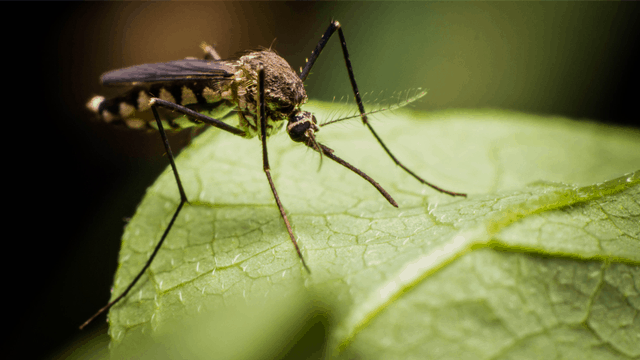July 19, 2021
Researchers identify genes linked to COVID-19 susceptibility and severity. A large international study led by researchers from the COVID-19 Host Genetic Initiative identified 13 loci involved in COVID-19 susceptibility and severity, six of which were previously unreported from other COVID-19 genome studies, while two were discovered only upon the inclusion of East Asian participants. Researchers identified more than 40 candidate genes, some of which have been previously linked to immune function or have known functions in the lungs. [Nature]
Phylogenetic estimates indicate high interstate transmission early in the pandemic in the United States. A recent molecular epidemiological study assessed the number of SARS-CoV-2 introductions into Washington state (WA). Researchers estimated that between January and September 2020, 287 separate introductions of SARS-CoV-2 entered WA, while 204 lineages were exported. Whereas 39% of the introductions came from abroad, 61% originated from the US, highlighting the role of interstate travel in seeding local epidemics. [The Lancet]
Previous infection or vaccination may not protect against the new P.1 SARS-CoV-2 lineage. Researchers in Brazil assessed the effectiveness of neutralizing antibodies generated from previous COVID-19 infections or vaccination against the newly emerged SARS-CoV-2 P.1 lineage. Plasma from previously infected individuals was 25 times less effective against P.1 isolates compared to B isolates. In contrast, plasma from individuals fully vaccinated with CoronaVac showed low neutralization capacity for both lineages and particularly for the P.1 lineage, suggesting that genomic surveillance should be guiding national immunization programs. [The Lancet]
Most American women between the ages of 25 and 45 years are not up to date with their recommended vaccines. A recent cross-sectional analysis using data from women aged 24-45 revealed that in a cohort of 309 women, only 6.2% were up to date for tetanus, influenza, and HPV vaccines, while 13.3% had not received any of the vaccines. White women and younger women were more likely to have received the HPV vaccine than non-white women or older women, respectively. [BMC]
Asymptomatic children as important drivers of malaria transmission in Uganda. A longitudinal, observational cohort study in Uganda investigated sources of persistent malaria transmission among 80 randomly selected households from the Tororo district. Mosquito feeding experiments on 101 participants revealed that asymptomatic microscopy-detected infections were significant drivers of transmission, with school-age children (5-15 years old) accounting for 58.7% of the infectious reservoir. [The Lancet]
Antimicrobial stewardship core curriculum increases confidence among infectious disease program directors and fellows. An evaluation of the Infectious Diseases Society of America’s (IDSA) antimicrobial stewardship (AS) curriculum for infectious disease (ID) fellows revealed that satisfaction with the AS training increased from 16% to 68% among program directors and from 51% to 68% among students following implementation of the IDSA curriculum. While interactive and in-person sessions were deemed the most valuable curriculum components, time was considered the most significant barrier to implementation. [Clinical Infectious Diseases]
Widespread testing is necessary despite stable transmitted HIV drug resistance levels in the United States. A US study recently assessed transmitted HIV drug resistance in 28 states which had 70% of the yearly HIV diagnoses. Among 50,747 HIV-positive individuals (83.0% male), 18.9% had at least one transmitted drug resistance-associated mutation (TDRM), with most individual mutations presenting at less than 1%. Although TDRM levels did not change from 2014-2018 for individual drug classes, the persistence of resistance and evolving trends in prescribing practices for preexposure prophylaxis warrant continuous population-level surveillance to control emerging resistance. [Clinical Infectious Diseases]
High antimicrobial use across several hospitals in Ghana. A multicenter point prevalence study across hospitals in Ghana involving data from 2897 patients revealed a patient-to-antimicrobial prescription ratio of 1:1.8. The majority of the prescriptions were for community-acquired infections (76.4%) with more than half of the patients receiving two types of antibiotics. The overwhelming majority of the prescriptions (96%) were empirically prescribed without microbiological data, underscoring the need for better antimicrobial stewardship. [JAC-Antimicrobial Resistance]
Vaccine perception differs among parents of adolescents. A study utilizing data on 1022 parents and 985 adolescents from internet surveys by the Healthcare and Public Perceptions of Immunizations (HaPPI) Survey Collaborative revealed that, as of April 2021, 55.5% of parents of unvaccinated adolescents reported intent to have their adolescent vaccinated, with a similar rate of intent (51.7%) observed among the unvaccinated adolescents. Parents who identified as female, Hispanic, or had less than a bachelor’s degree reported the lowest adolescent vaccine receipt. Parents cited information on safety and efficacy and vaccination as school requirements as factors that could increase vaccination intent. [CDC]
Vaccination of girls aged 9-14 years for HPV, most effective at reducing cervical cancer in LMICs. A recent modeling study estimated the effectiveness of human papillomavirus (HPV) vaccination strategies in low- and middle-income countries such as India, Vietnam, Uganda, and Nigeria. Routine vaccination of girls aged 9-14 years was estimated as the most efficient and cost-effective strategy with the number of doses needed to prevent one case of cervical cancer ranging from 78 to 381 and incremental cost-effectiveness ratio ranging from $28 to $1406 per disability-adjusted life-year averted. [The Lancet]
Photo: Shutterstock













